Mallorca might not be known as the ultimate destination for carefree road trips, but having a car at your disposal is often necessary, since the most beautiful spots are rarely accessible by public transportation. To ensure you don’t miss out on anything, I’ve put together various road trips in Mallorca. This comprehensive article presents eight captivating itineraries that can be seamlessly combined for one-day, two-day, three-day, or longer road trips. Whether you have eight days to spare or just one, you can customize your journey to uncover the hidden gems and stunning landscapes of Mallorca at your own pace.
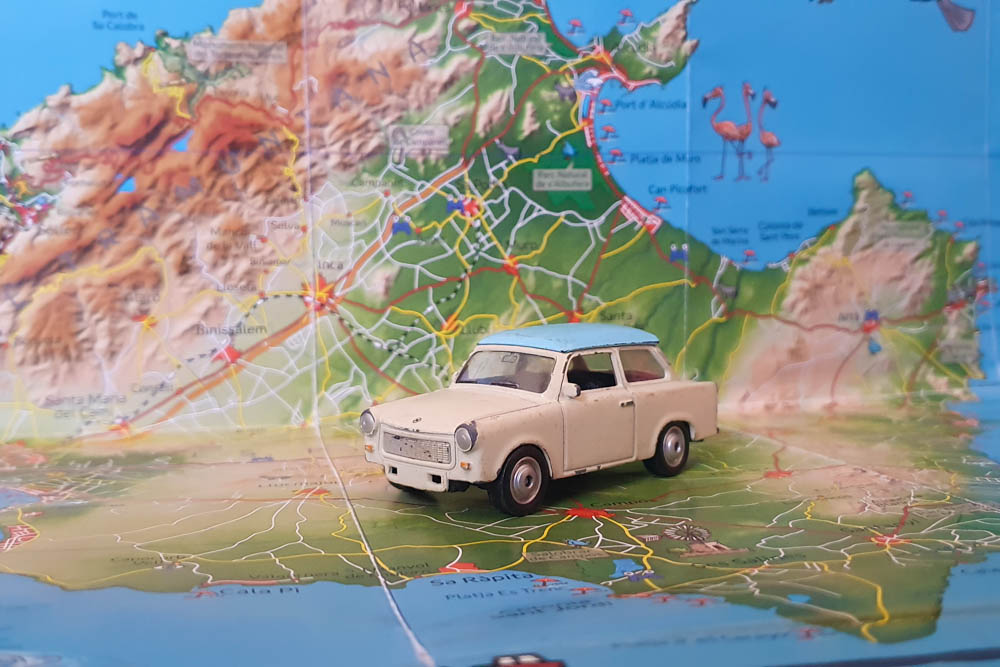
Transparency note: Some links in this post may lead to external booking opportunities. If a purchase is made, we receive a small commission. The price does not change for you.
In this blog post, you will find a total of eight suggested itineraries for the most beautiful road trips in Mallorca by car. Each tour is of similar length, but has different starting and ending points. They will take you past the well-known landmarks as well as to some insider tips and hidden gems on the island. You’ll find detailed route descriptions, including maps, specific driving and stay durations, addresses, and many more pieces of information in the Roadbooks (Road trip E-books), that are available individually for each tour or as a bundle. Currently, the Roadbooks are only available in German, but if you are interested, please feel free to contact me, and I’ll provide you with a translation.
- Road Trips in Mallorca: Finding Budget-Friendly Rental Cars
- Multi Day Itineraries: The 8 Most Beautiful Road Trips in Mallorca
- From Pollença to Cap de Formentor
- Across the La Victoria Peninsula
- Artà: Castles and Caves
- In the heart of the island: From the farmer’s market in Sineu to the old country estate
- The Southern Tip: Es Trenc & Cap de Ses Salines
- From Santanyí to Felanitx: Harbor towns, natural landmarks & chapels
- Through the Mountain Villages: Valldemossa, Deià & Sóller
- Orange Valley & Gorges: Exploring from Cúber to Sa Calobra
- Individual Mallorca Road Trip Itinerary
- Read More
Road Trips in Mallorca: Finding Budget-Friendly Rental Cars
No road trip is possible without a car, so the first step is to find a suitable and affordable rental vehicle. The internet is filled with tons of information, most of which aim to sell you something or rent you a car. In my job as a receptionist, I’ve assisted many vacationers in finding the right rental car. We’ve collaborated with almost all major and many smaller companies. And let me tell you, there can be issues with all of them, and online reviews are not always accurate.
For instance, Goldcar is often discouraged due to their aggressive upselling of additional insurance coverage and attempts to blame damages on customers who haven’t purchased it. However, we still sometimes book with them, but not without thoroughly photographing the entire vehicle before and after. Generally, we always book through a broker like discovercars.com. These brokers offer the option to get your deductible reimbursed in case of damage for a small fee, eliminating the need for expensive extra insurance.
There is already a comprehensive article on this website with recommendations and tips for renting a car in Mallorca, so I won’t repeat everything here. But I’d like to mention a quick tip: never leave valuables in the car, whether visible or in the trunk. Some places, like the Cúber reservoir area, are known for attracting thieves. Moreover, it’s important to be aware of a new tactic employed by thieves on the island. They have been known to use signal interruption devices on automatic car keys. By blocking the key’s signal, they can copy it and gain access to the car, stealing valuables without leaving any visible signs of a break-in. Unfortunately, some victims only realize they’ve been robbed much later, making it difficult to prove the theft to insurance companies. In such cases, insurers may argue that the car was not properly locked, leading to potential issues with insurance coverage.
Furthermore, I recommend choosing smaller cars. Not only do large, expensive cars attract potential thieves, but small rental cars also make it easier to find parking spots and navigate the narrow streets of the mountain villages. Personally, we also own a small car for getting around the island.
Multi Day Itineraries: The 8 Most Beautiful Road Trips in Mallorca
Below, you will find a total of eight tours that will take you on a journey around and across the entire island, with several stops on various points of interest. These tours can be combined with each other to create your own unique adventure. However, during the peak season, we recommend booking accommodations well in advance. Keep in mind that wild camping is prohibited, and there are only a few official campsites available on Mallorca.
In this article, we provide a general overview of each tour. For detailed route descriptions, including fully developed itineraries, suggested stops, dining options, accommodations, and a wealth of additional information, you can find them in the corresponding E-books. Each tour E-book is available for €4.95, or you can get the complete package for €24.95.
From Pollença to Cap de Formentor
Pollença – Cala Figuera – Cap de Formentor Lighthouse – Formentor Beach – Albercutx Watchtower – Port de Pollença
Road Trip Details:
- Best Season: October to May
- Duration: 7 hours
- Starting Point: Pollença
- Endpoint: Port de Pollença
- Distance: 50 km
- Driving Time: 1 hour 40 minutes
- Stops: 6
- Swimming Breaks: 2 Special
- Note: Access closed from June to September.
- If you have extra time: Hike to Puig de Maria, visit Cala Sant Vicenç, hike to Cala Bóquer.
A visit to Mallorca without experiencing Cap de Formentor is incomplete. This unique peninsula in the rugged north offers hidden beaches, rugged cliffs, and breathtaking views.
Your road trip adventure starts in Pollença. This town has a rich and eventful history, best explored through a leisurely stroll or our scavenger hunt in Pollença. The main attractions include the staircase leading up to Calvary Hill and the Roman bridge. If you visit on Sundays, you’ll also have the chance to experience the bustling market.
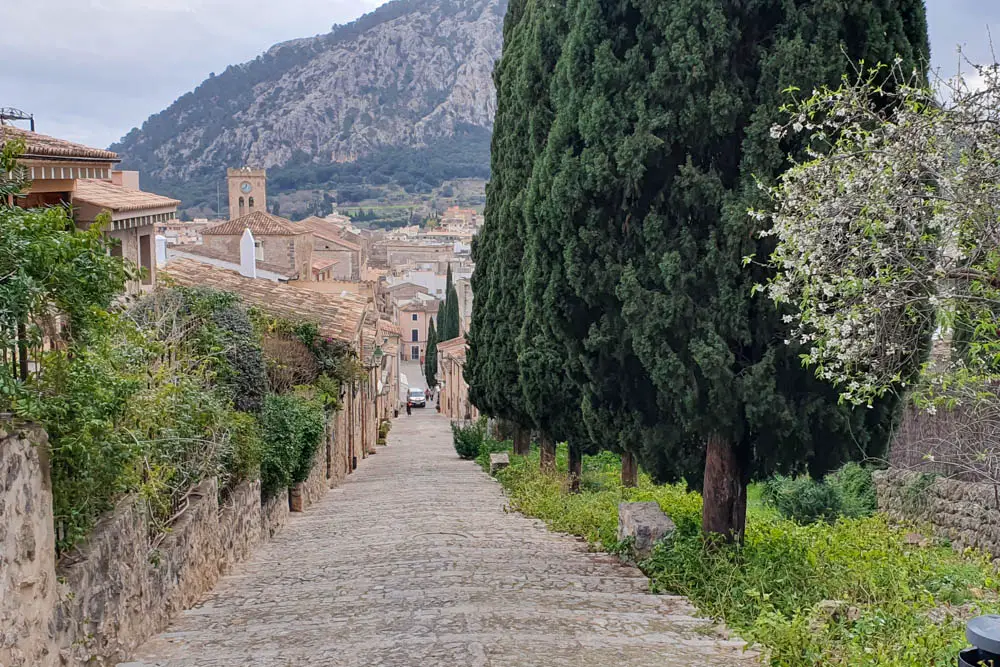
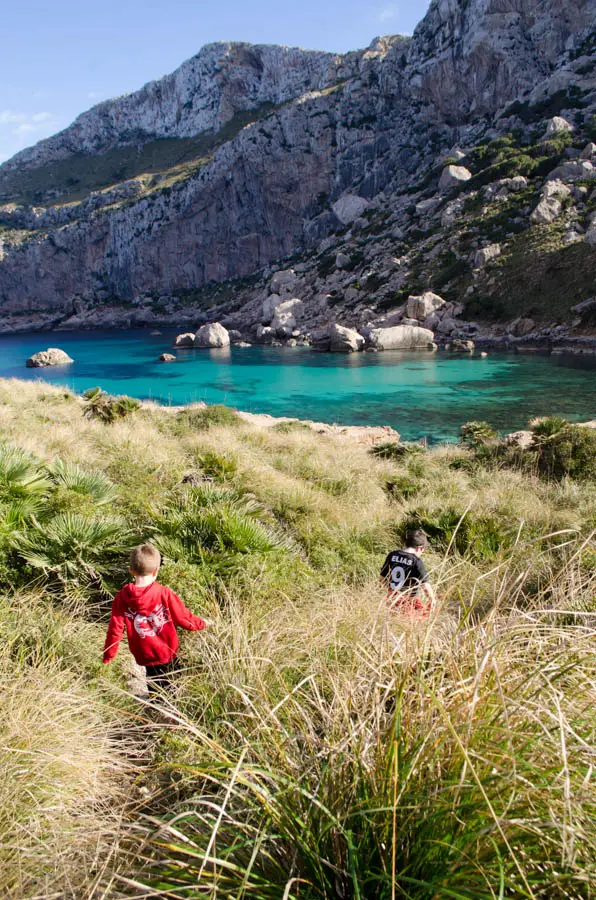
But our main destination for this road trip in Mallorca is the Formentor Peninsula. Initially, we’ll pass by all the obligatory tourist stops and make our first stop for a short detour to the Cala Figuera Beach. Optionally, this is a great spot for a quick swim break.
After this brief stop, we’ll continue to the end of the world – well, actually, the end of the peninsula – where the famous lighthouse stands. But to be honest, there isn’t much to discover at the northernmost tip of the island. You might encounter some wild goats, and at the lighthouse, there’s a small but overpriced snack bar.
After taking the obligatory photo, we’ll head back – this time to Platja de Formentor Beach. This crescent-shaped beach, framed by mountains and sheltered from the winds by a lovely pine forest, is the only sandy alternative on an otherwise rugged peninsula.
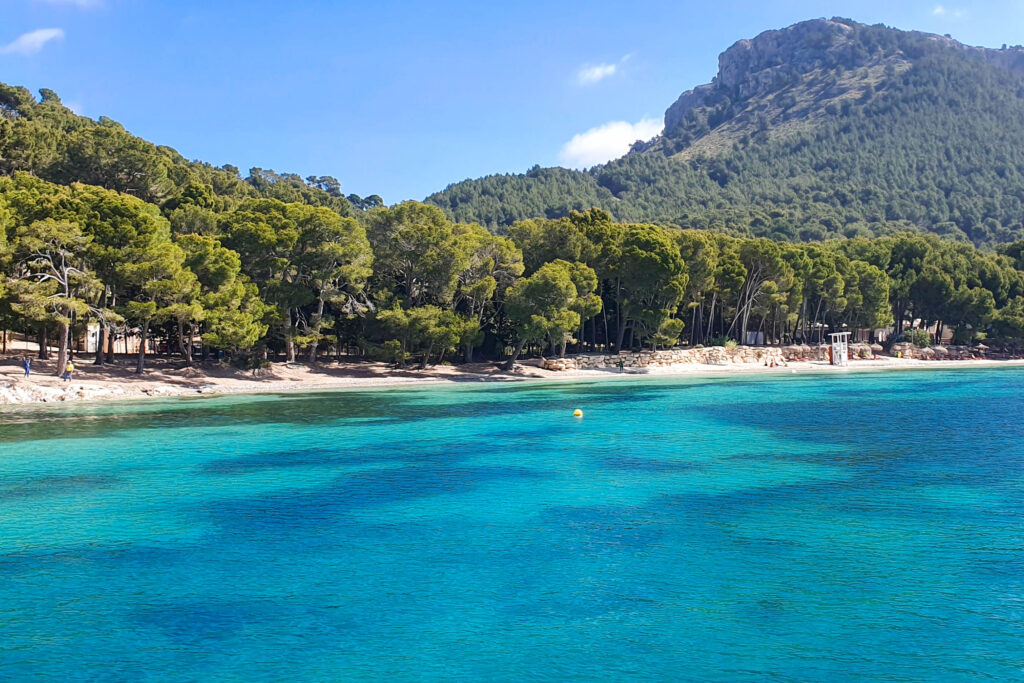
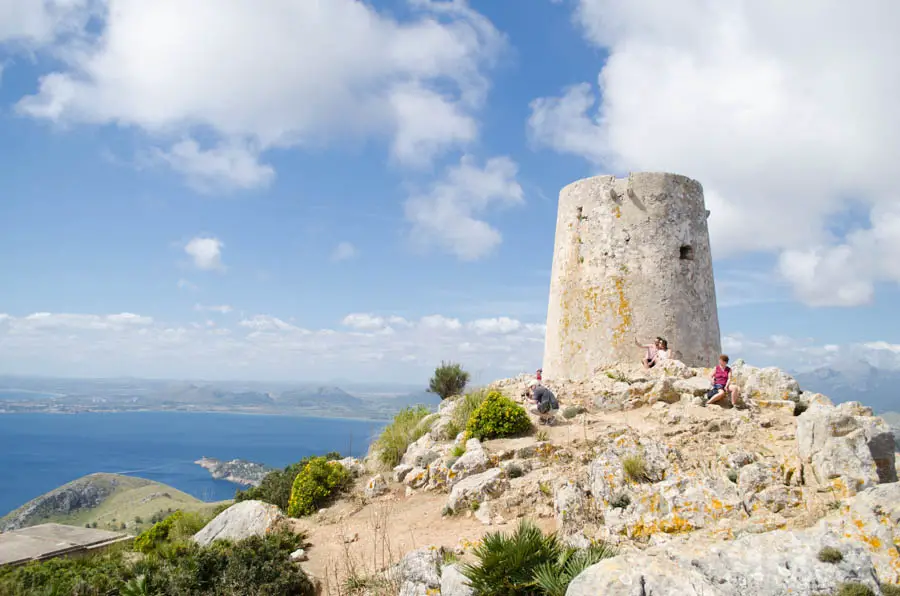
Another stop for most visitors of the peninsula is the viewpoint at Es Colomer. However, we’d like to take you even higher. Ideally, the sun is already setting low, giving you the chance to witness one of the most spectacular sunsets in Mallorca. Head to the Albercutx Watchtower.
Also interesting: The most beautiful viewpoints in Mallorca.
From there, you’ll have a phenomenal panoramic view of Cap de Formentor, Port de Pollença, Formentor Beach, and large parts of the island. Once you’re back in the car, drive back to Port de Pollença. There, you still have the option to dine at one of the restaurants by the harbor. The sandy beach here is artificially made, and along the promenade, you’ll find plenty of restaurants and some lovely playgrounds. It’s the perfect place to wind down and end the day.
Across the La Victoria Peninsula
Alcúdia – Hermitage Ermita La Victoria – Watchtower (optional) – Beach S’Illot – Hidden Gem – Port d’Alcúdia
Road trip details:
- Best season: All year round. With hiking, best in spring and autumn. Enjoy beach breaks during the summer months.
- Duration: 7 hours
- Starting point: Alcúdia
- Endpoint: Port d’Alcúdia
- Distance: 13 km
- Driving time: 30 minutes
- Stops: 5
- Beach breaks: 2
- Note: Hike to the watchtower requires certain abilities. Suitable for children from around 7 years old.
- If you have extra time: Cova Tancada, Playa de Muro, Albufera Nature Park, Hidropark Alcúdia
After exploring the well-known peninsula of Mallorca, let’s now venture into the slightly tamer and lesser-known one: La Victoria Peninsula. It’s a popular hiking destination, and we won’t be entirely idle, either. Moreover, it offers great opportunities for swimming, especially when discovering the many hidden caves and coves that we’ll reveal in the E-Book.
Our journey begins in the town of Alcúdia. Its impressive city walls are the first thing you’ll notice, and they happen to be the highlight of the place as well. The historic city center is charming and compact, and a leisurely stroll through its narrow streets is a must. For a more engaging experience, you can also embark on our scavenger hunt through Alcúdia. Additionally, every Tuesday and Sunday, a weekly market takes place along the city walls. At the end of July, festivities in honor of the patron saint are celebrated with various events and activities.
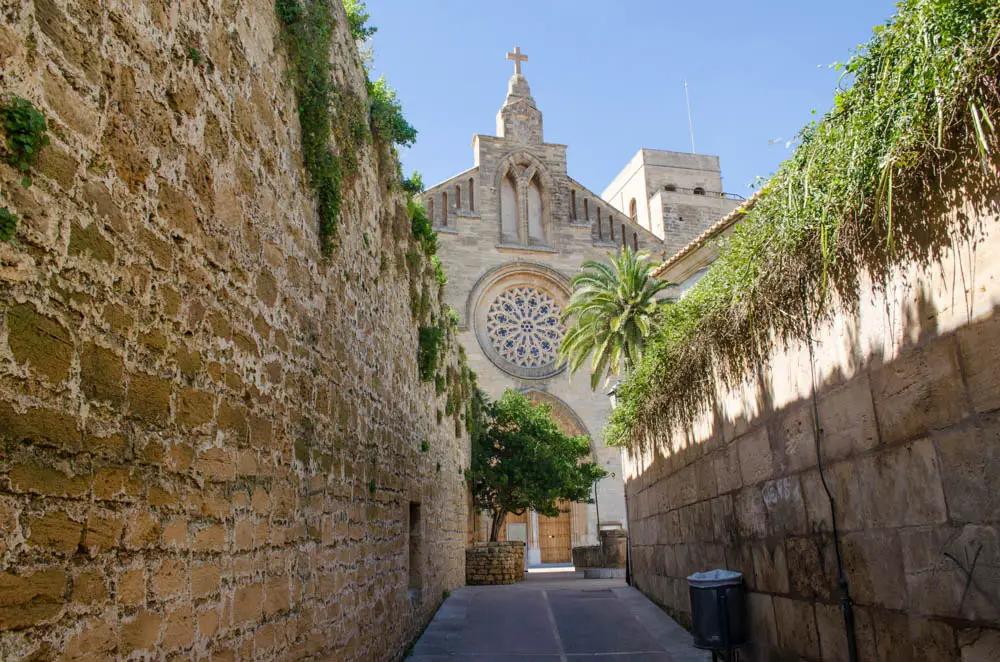
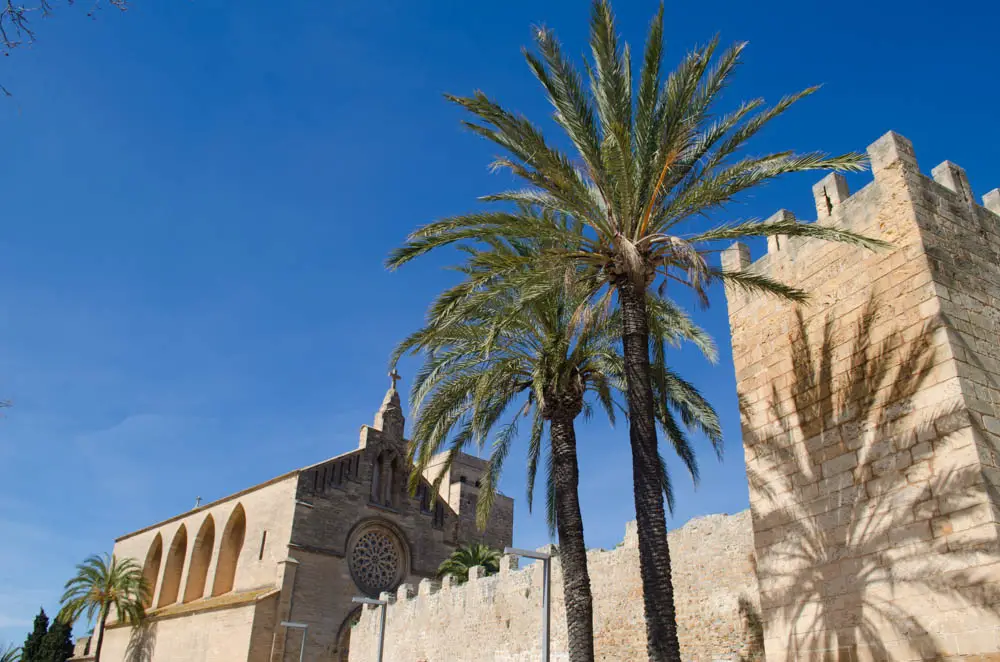
Another highlight worth visiting is the archaeological site of the former Roman city of Pollentia, located outside the city walls. This city served as the capital of the island during the Roman rule, and these ruins are the only architectural remains from that era in Mallorca. Particularly beautiful is the Roman theater, which is situated a bit further away.
Afterward, we continue our journey to the La Victoria Peninsula. If you’re not in the mood for hiking, take some time to explore the area. Behind the Ermita, you’ll reach the viewpoint of Ses Tres Creus, the three crosses. Even without hiking, you can still enjoy the pleasant atmosphere here while overlooking the sea. From this vantage point, you can see the Formentor Peninsula and the Bay of Pollença.
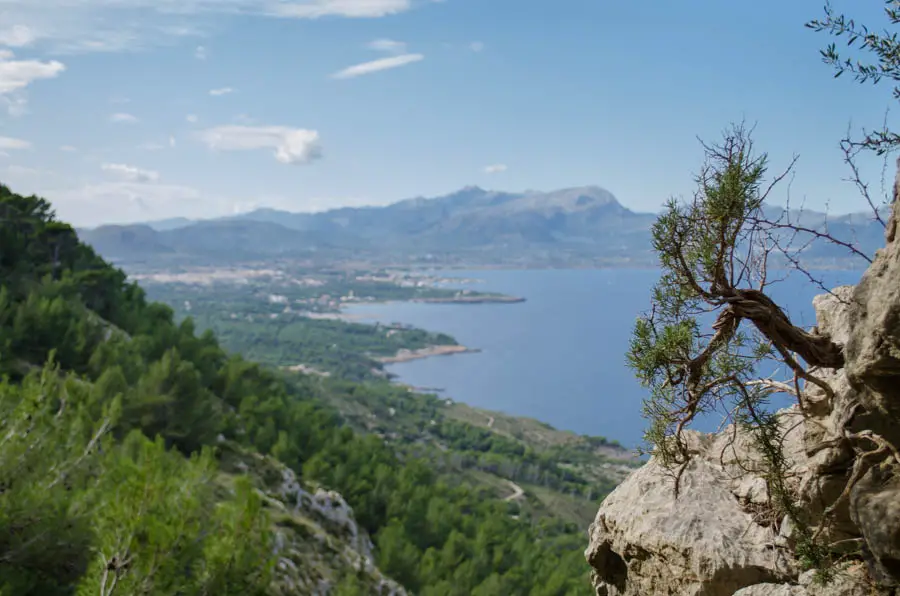
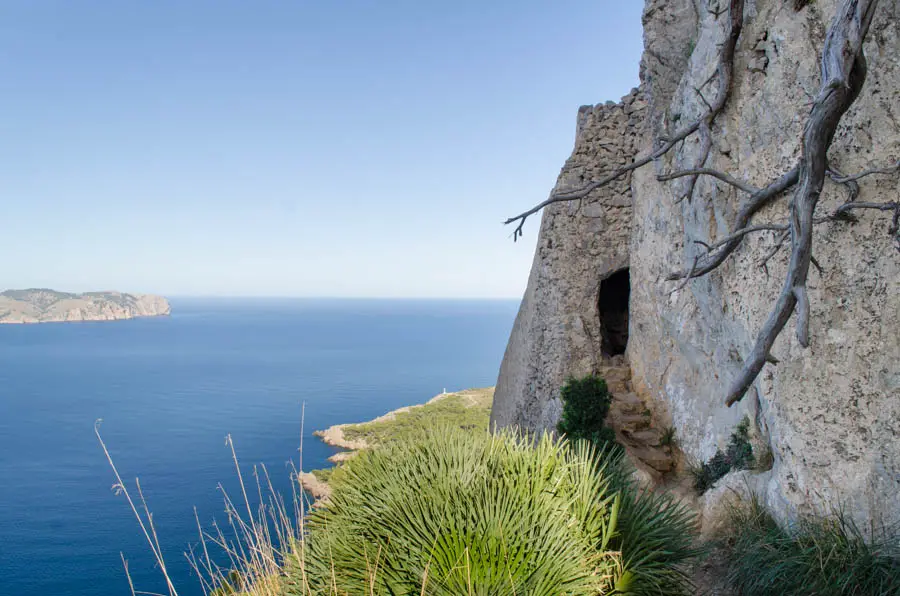
However, for much more impressive views, venture a little further into the peninsula. The hiking trail behind the Ermita ascends in wide switchbacks. Then, to the left, a smaller path leads to a watchtower perched directly on the mountain. Behind it, you’ll find the remains of a former garrison, with barracks for the soldiers and a cannon oven. A bit higher up, there’s a platform with a rusty cannon. The hike is not very long, but not suitable for small children. We provide a detailed description of this hike in our hiking guide “Naturzeit für Kinder: Mallorca.”
After the invigorating hike, it’s time for a refreshing dip. One suitable option is the beach called S’Illot, named after the small island that can be easily reached. The beach consists of small pebbles, and it’s easy to walk barefoot into the water. However, it’s a good idea to have water shoes if you plan to explore the island a bit.
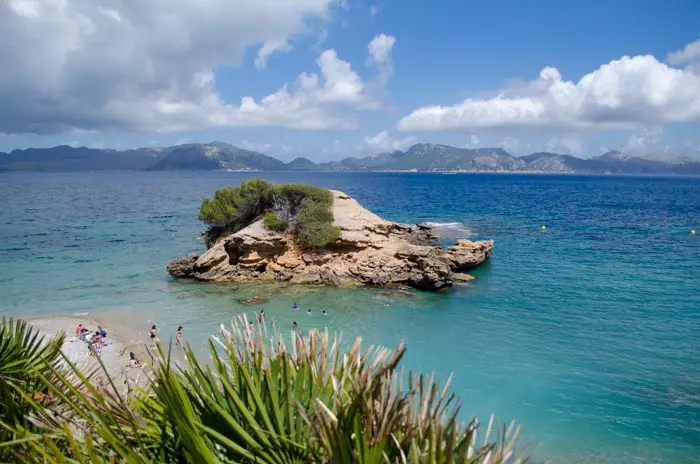
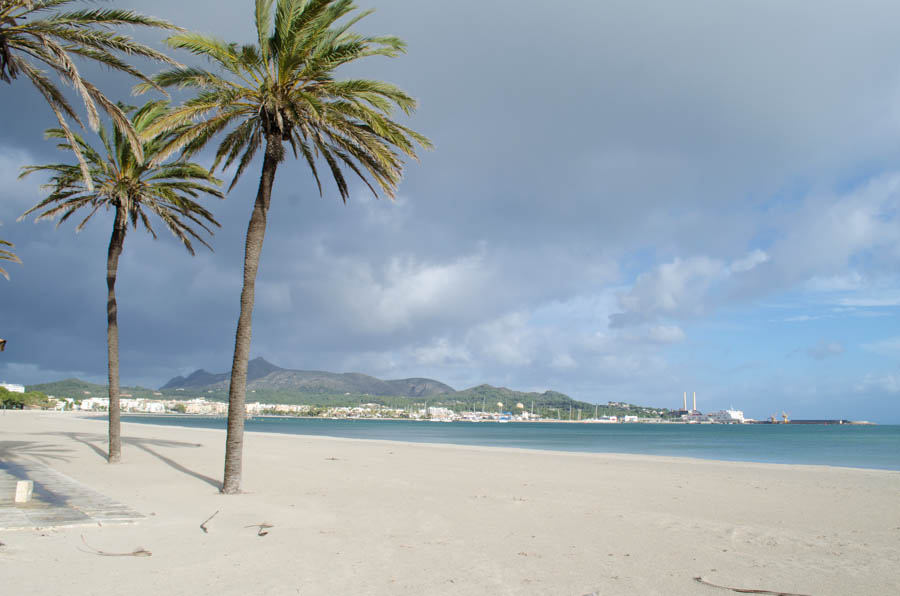
With younger children, Port d’Alcúdia is the better beach alternative. The beach is long and seamlessly connects to Playa de Muro. The water is very shallow, but still, be cautious of currents. Behind the beach promenade, you’ll find many restaurants and several playgrounds.
Artà: Castles and Caves
Artà – Ermita Betlem – Capdepera – Coves d’Artà – Canyamel
Road Trips Details:
- Best Time to Visit: All year round
- Duration: 8 hours
- Starting Point: Artà
- Endpoint: Canyamel
- Distance: 36.5 km
- Driving Time: 1 hour
- Stops: 5
- Swimming Break: 1
- If there’s extra time: Costa de los Pinos, Cala Ratjada
After exploring numerous beaches, this tour takes us slightly inland, but don’t worry, there’s still time for a refreshing swim. Additionally, we’ll visit castles, monasteries, and a spectacular limestone cave. Make sure to pack a picnic and, of course, your bathing suits.
First, we’ll explore the charming town of Artà, home to an impressive castle and a parish church. The 180 steps leading to the fortress witness a grand penitential procession on Good Friday. Afterward, we’ll descend the stairs to the town center, where you might squeeze in a quick visit to the ArtArtà Fairy Tale Museum. Here, you’ll find famous Mallorcan folklore characters and a variety of handcrafted, traditional souvenirs.
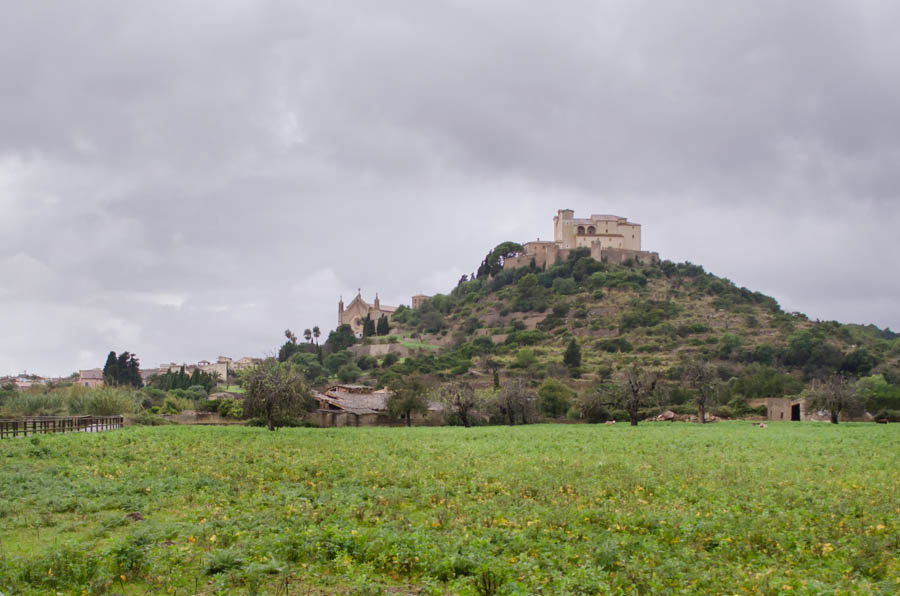
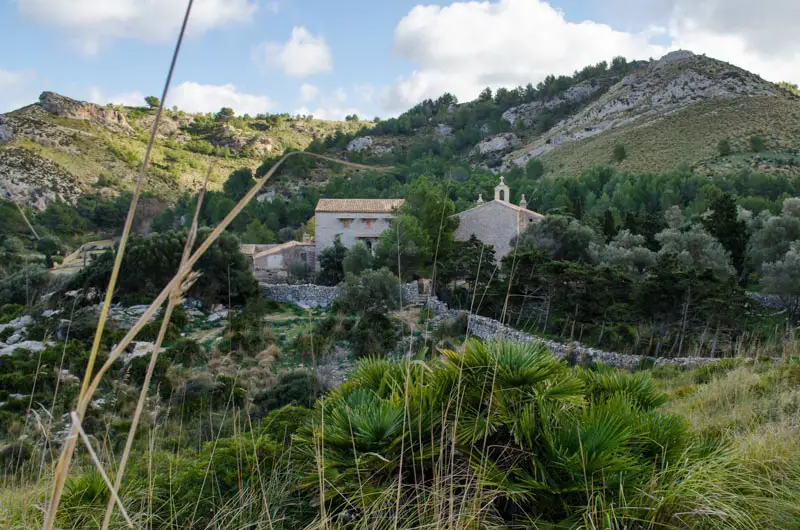
Behind the Artà castle, a beautiful mountain road leads to the hermitage Ermita de Betlem. In the monastery, you can visit the chapel and climb a small hill behind the building, offering fantastic views of the former fishing village of Betlem. On the other side of the monastery, there’s a spring with a small enamel bowl hanging, allowing you to fetch water. It is believed that the spring water has rejuvenating properties. Also, you can find a small altar built inside a cave here, and the shade from the giant plane trees makes it a perfect spot to rest!
From the monks, we head to the knights. The Capdepera Castle stands 8 kilometers inland from the sea, overlooking the small town. It is the largest and best-preserved castle in Mallorca. Every May, it becomes the venue for a highly popular medieval market.
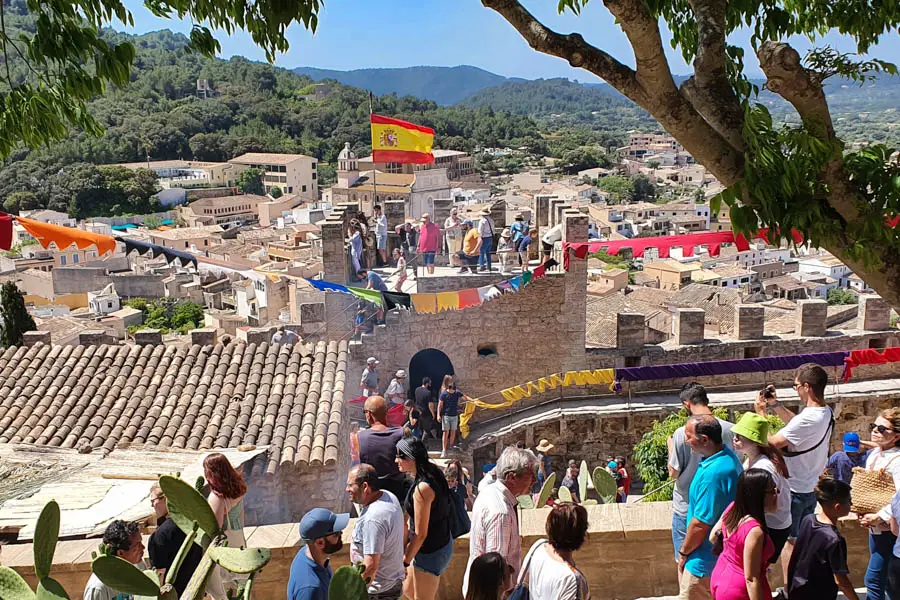
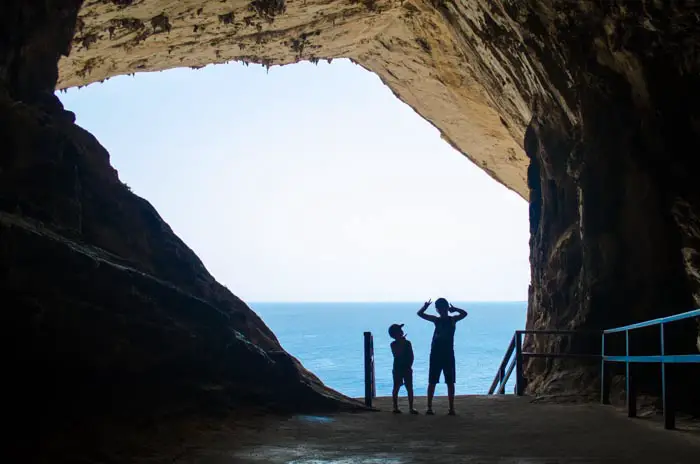
Next, from the highest turrets, we venture underground. Right by the sea, with a spectacular staircase, you’ll find the Coves d’Artà. These caves may not be as famous as the Coves del Drach in Porto Cristo, but they are equally impressive. They feature high chambers and columns.
Finally, we head to the beach in Canyamel. This beach is perfect for families and offers a wide range of amenities. For those seeking a bit more adventure, you can walk along the coast to the left and discover a small cave.
In the heart of the island: From the farmer’s market in Sineu to the old country estate
Sineu – Petra – Bonany – Els Calderers – Glassblower Workshop – Monastery of Randa
Road trip details:
- Best season: Year-round
- Duration: 8 hours
- Starting point: Sineu
- Endpoint: Monastery of Randa
- Distance: 54.7 km
- Driving time: 1 hour 20 minutes
- Stops: 6
- Swimming break: 0
For this tour, choose a not too hot day, but definitely a Wednesday, as that’s when the traditional farmer’s market takes place in Sineu. There, you can stock up on delicious treats to enjoy at a shady spot along the way. We’ll pass through some charming small towns in the interior, visit an old country estate, the oldest glassblowing workshop, and end the day at a monastery on a lofty hill.
To make the most of the market in Sineu, it’s best to arrive early in the morning, as it gets crowded with tourists later in the late morning. If you’re lucky, you might witness local farmers buying sheep, chickens, and birds. The market in Sineu is the oldest weekly market in Mallorca and the only one where animals are still sold.
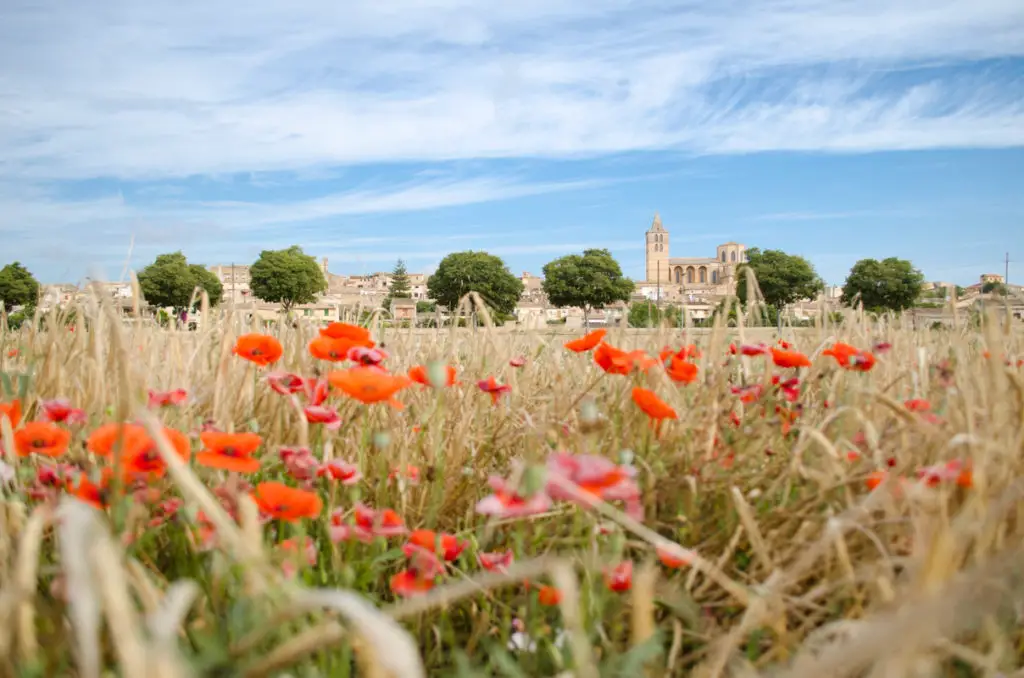
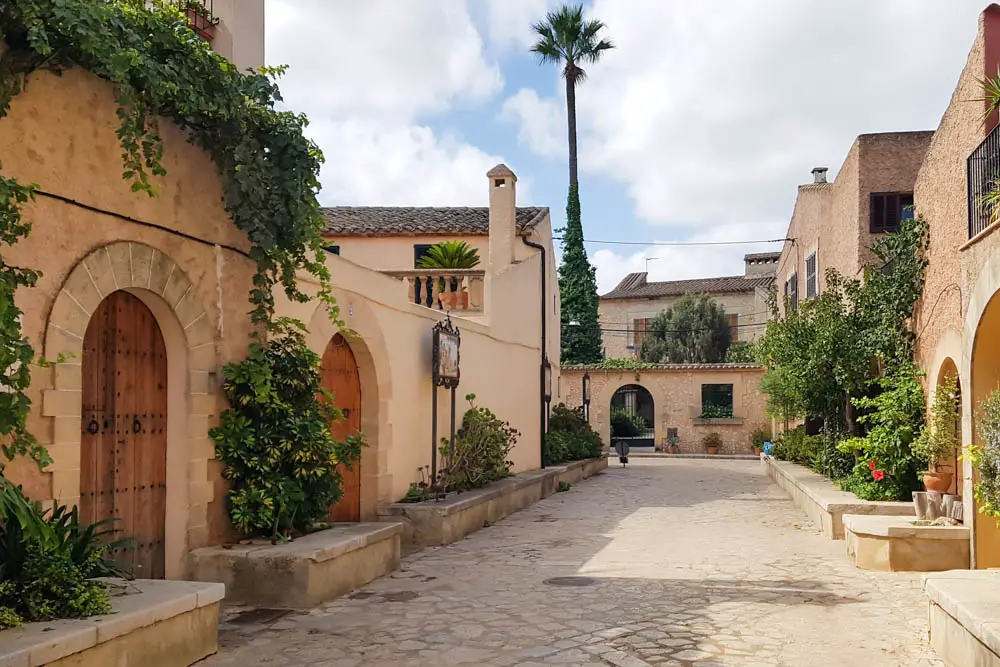
With our bags full, we continue our journey to the little town of Petra. It may not be widely known, but it gained fame primarily because of a man named Junípero Serra. The Franciscan monk and missionary was born here. In 1749, he was sent to America on royal orders to establish mission villages in California. He founded a total of 21 missions, including San Francisco, which he named after his order.
As we follow the bypass road towards Vilafranca, a sign points to Bonany. We drive up the mountain, where a small monastery complex is located. From the top, you’ll have a panoramic view of the entire plain. Behind the monastery, you’ll find picnic benches shaded by trees. It’s the perfect spot to enjoy your picnic, which you hopefully stocked up on at the market in Sineu.
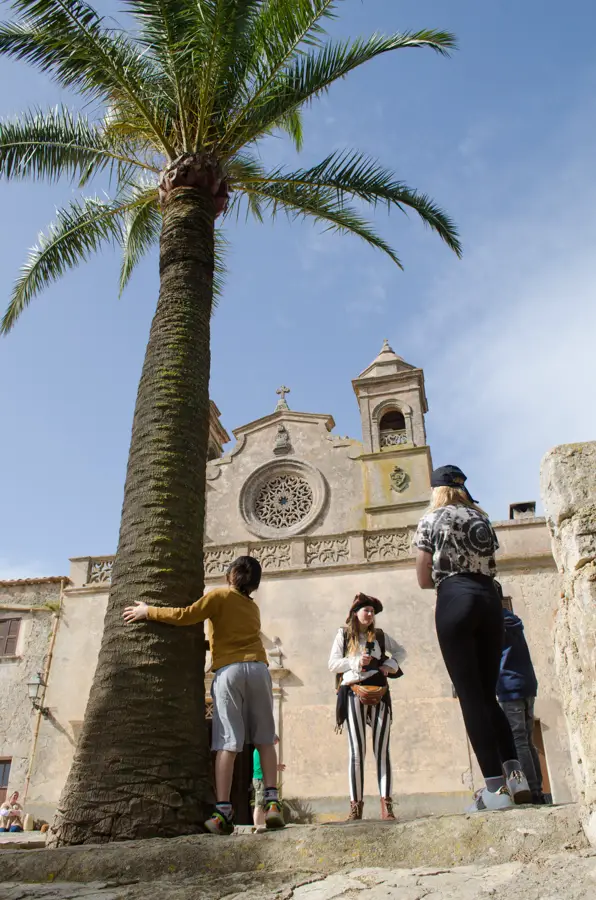
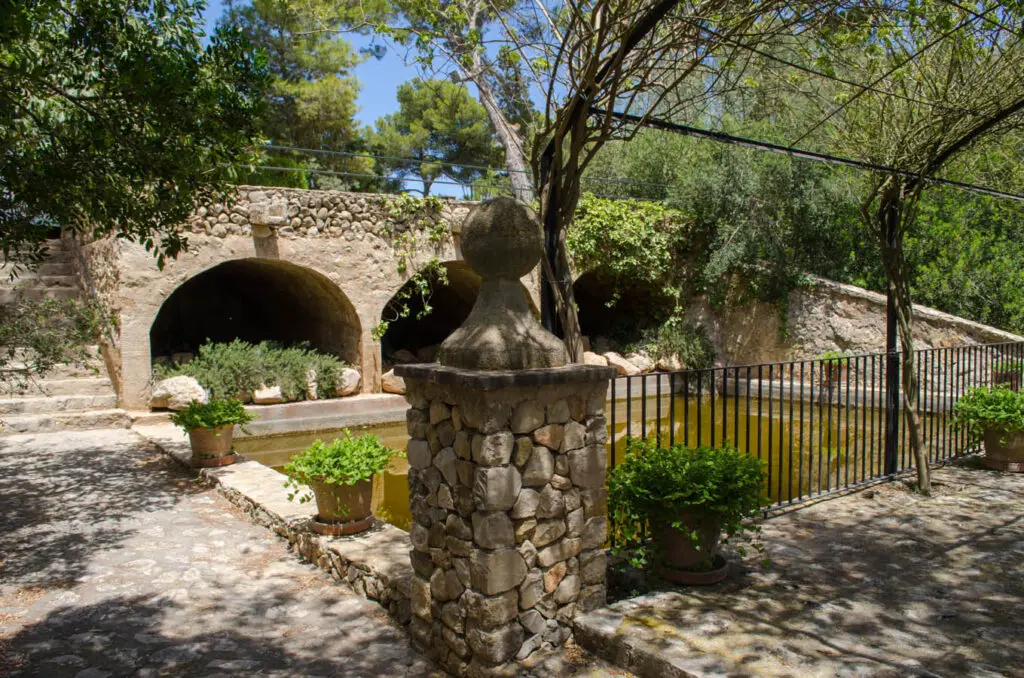
Feeling refreshed, we continue to Els Calderers, an old Mallorcan country house. The former landowner traveled extensively around the world, bringing back new machines and various objects. Along with everyday items, walking sticks, clothing, and work tools, a curious collection emerged. Outdoors, you’ll find numerous stables where traditional Mallorcan agricultural animals still live today.
Our next stop is conveniently located along the way and also illustrates an essential part of Mallorcan history. The art of glassblowing has a long tradition on the island, and the Gordiola glassblowing workshop is one of the oldest practitioners of this craft. Though, the delicate glass artworks are now produced in this charming old building. Besides a sales area, you also have access to the workshop, where the magic happens. You can observe the glassblowers up close as they work their craft.
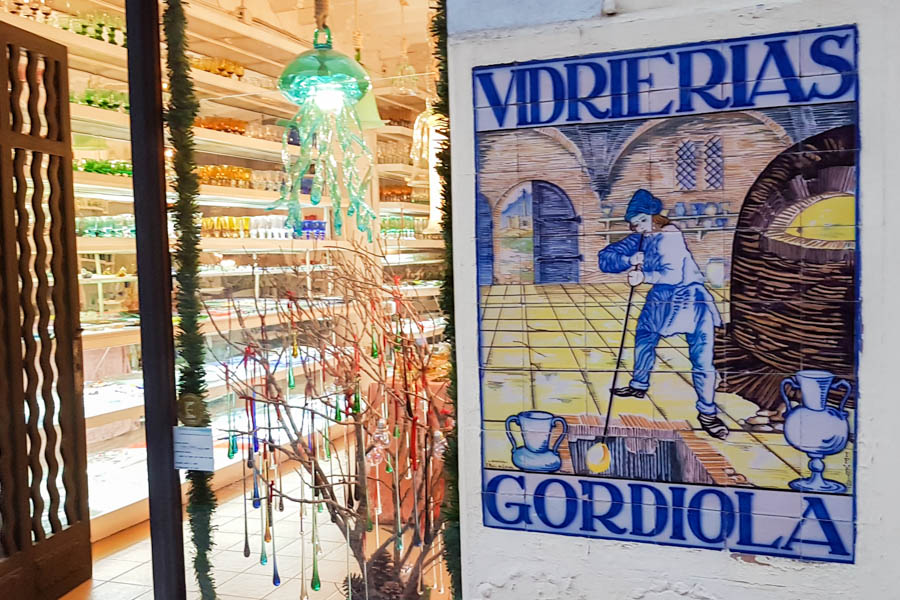
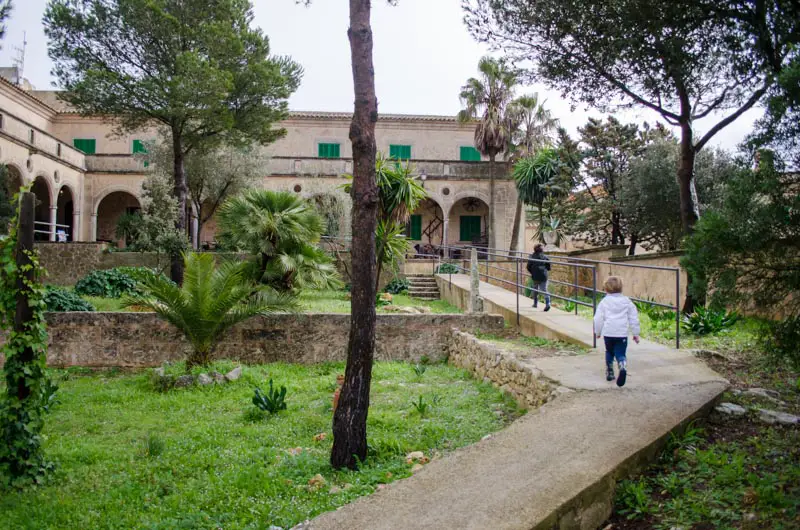
To conclude our day, we will head to the top of the mountain Puig de Randa, where the town of the same name is located. On the mountain, you’ll find a total of three monasteries. Due to time constraints, we’ll settle for visiting the largest one, Santuari de Cura. Here, you’ll find a restaurant with an outdoor terrace, which is perfect for enjoying a dinner while watching the sunset in the distance. It’s a great way to end the day on this beautiful mountain peak.
The Southern Tip: Es Trenc & Cap de Ses Salines
Porreres – Montission – Saltworks – Es Trenc Beach – Colonia de Sant Jordi – Botanicactus – Cap de ses Salines
Road Trip Details:
- Best Time to Visit: All year round
- Duration: 8 hours
- Starting Point: Porreres
- Ending Point: Cap de ses Salines
- Distance: 57.8 km
- Driving Time: 1 hour 14 minutes
- Stops: 7
- Swim Breaks: 1 – 2
- If there’s time: Es Caragol Beach
This road trip takes us from the inland to the southernmost tip of Mallorca. Along the way, we’ll pass by a secluded monastery, learn about salt production, take a swim at the famous Es Trenc Beach, and even go for a “dive” without getting our feet wet.
We begin our journey in Porreres, a small town in the inland, which may not seem to offer much for tourists at first glance. However, I still recommend making a stop here, even if it’s just for a bit of shopping. You’ll find numerous shops selling typical handcrafted Mallorcan items. For instance, at Barbara Art, you can find cookie cutters shaped like Mallorca among other things.
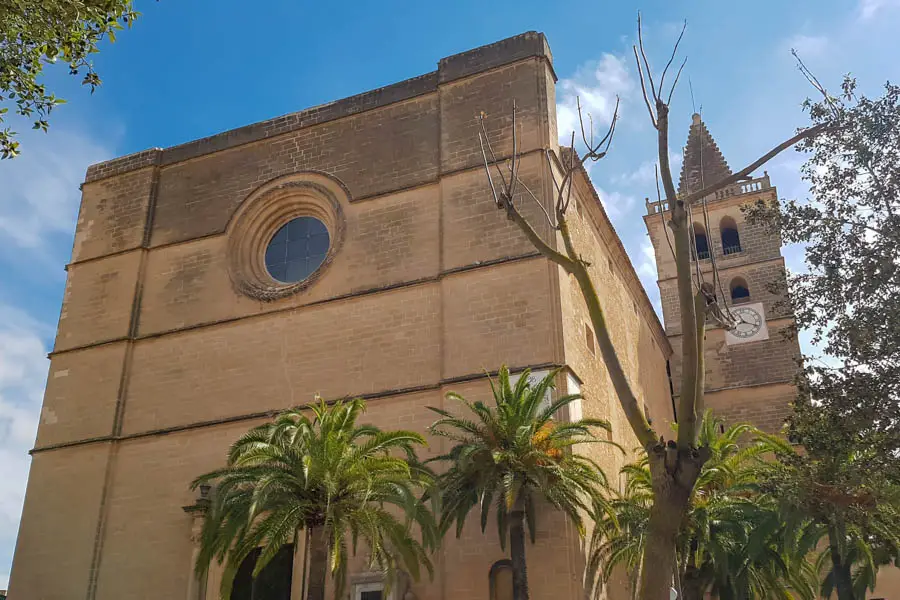
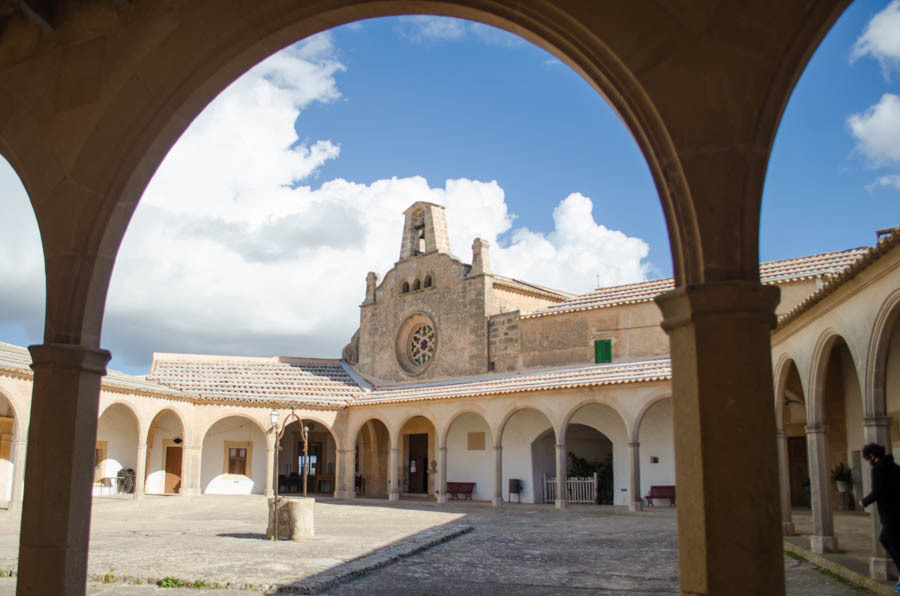
Before we head south, let’s take a detour to the hill near Porreres where the small Montision Monastery is located. Inside, you’ll find a small bar and some beds for overnight stays. Outside, there are picnic benches where you can enjoy some peace and tranquility. Take a moment to savor the serenity, as the next destination is bound to be a bit busier.
On our way to the beach, we’ll make a quick stop at the Es Trenc Saltworks. This salt production facility is one of the oldest on the island. In short guided tours (it’s better to book in advance), the staff will show you how the salt makes its way from the sea to your table.
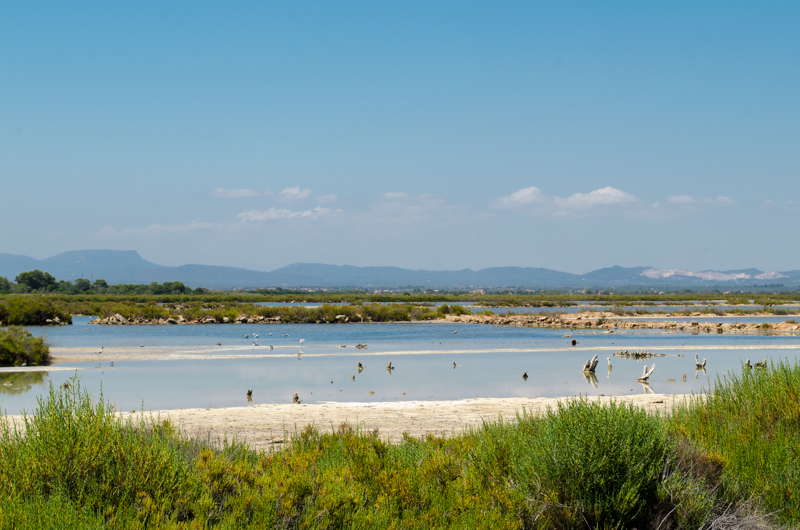
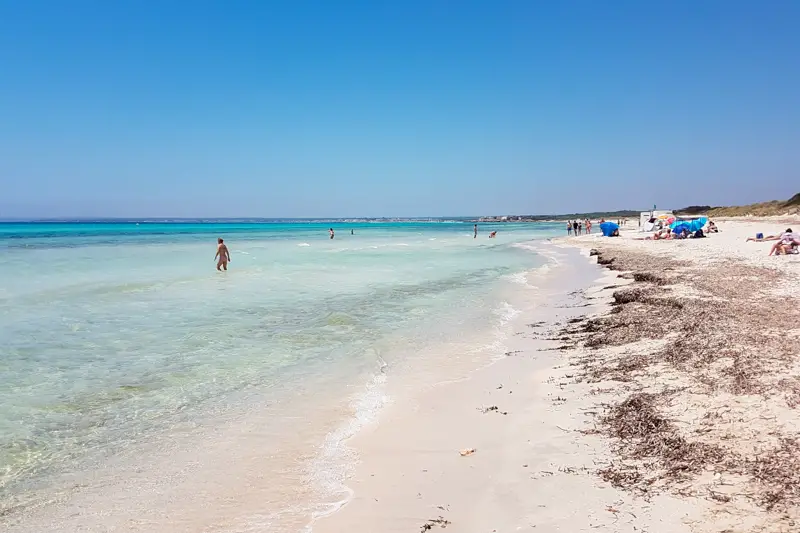
Continuing along the route, you’ll reach the parking area at Playa Es Trenc. The road leading there is not very wide, and it can get a bit crowded during the peak season. Es Trenc is a natural beach, which means that anything coming from nature should not be cleared away. Some visitors might be bothered by the seaweed, which can cover certain parts of the beach depending on the season and currents. However, there are always spots where you can easily access the water.
After a refreshing and extended swim, we’ll head to Colònia de Sant Jordi. Our destination is the visitor center, home to the Colònia de Sant Jordi Aquarium. From the harbor, you’ll have a view of Cabrera Island, which is a protected natural area. In the summer, excursion boats depart from the harbor to Cabrera. For those of us with limited time, the visitor center at the harbor offers an opportunity for an imaginary diving experience to explore the local underwater world and view some sunken Roman ships in Cabrera’s waters.
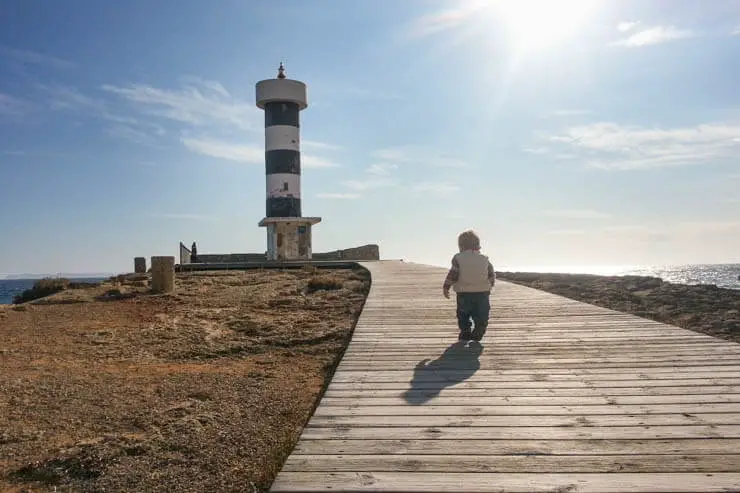
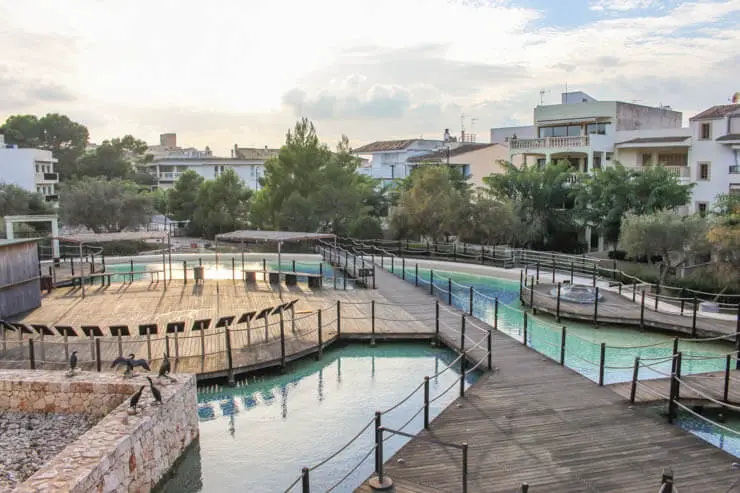
On our way to the last stop of today’s road trip, we pass through the small town of Ses Salines. There, the Botanicactus cactus garden is worth a visit. You can stroll through the beautiful grounds on well-maintained paths, which feature not only cacti but also other Mediterranean plants.
Ideally, you should head to Cap de Ses Salines to catch the sunset, as it’s the southernmost point of Mallorca and a great spot for that. You can park on the roadside, but depending on the time of year and the hour you arrive, it might be a bit further away from the sea and lighthouse. If you still have time and feel like another swimming break, you can take a detour to Es Caragol Beach, which is located about 20 minutes west of the lighthouse.
From Santanyí to Felanitx: Harbor towns, natural landmarks & chapels
Santanyí – Cala Figuera – Santuari de Consolació – Portocolom – San Salvador Felanitx
Road trip details:
- Best time of year: All year round
- Duration: 7 hours
- Starting point: Santanyí
- Endpoint: Felanitx
- Distance: 48.6 km
- Driving time: 1 hour 15 minutes
- Stops: 5
- Swimming break: 1
- If there’s extra time: Caló des Moro, Es Pontàs, Mondragó Nature Park
Let’s continue exploring the southeast of Mallorca, starting in the charming town of Santanyí, perhaps on a market day (Wednesday or Saturday). For lunch, we’ll head to the fishing port of Cala Figuera. However, we should move on before the fishermen return, as we have a small hidden chapel, a cave by the sea, and a monastery on the mountain to visit.
Santanyí is an authentic town that has been attracting more visitors in recent years, especially on market days. However, even on other weekdays, taking a stroll through the center to admire the impressive Sant Andreu Church is worthwhile. You’ll find plenty of restaurants around the central square.
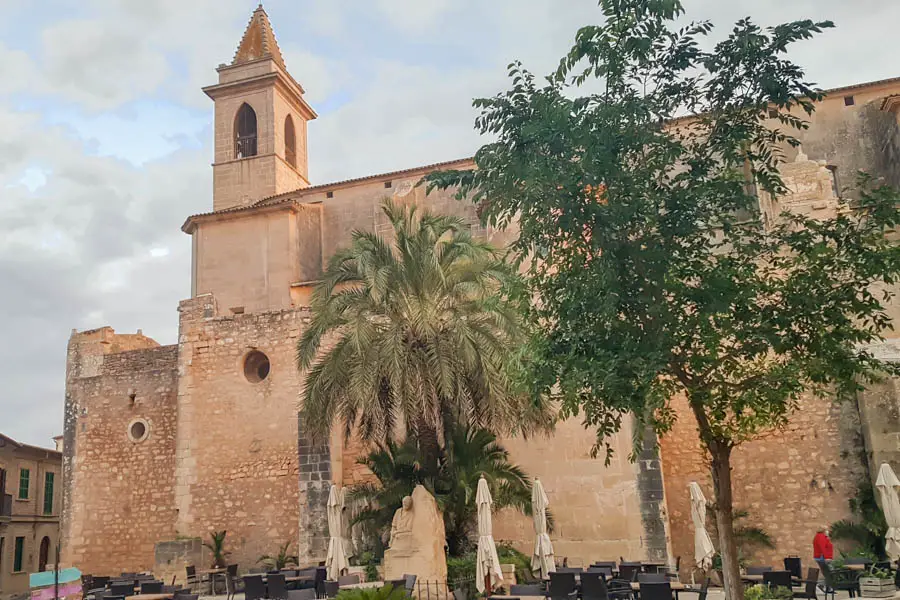
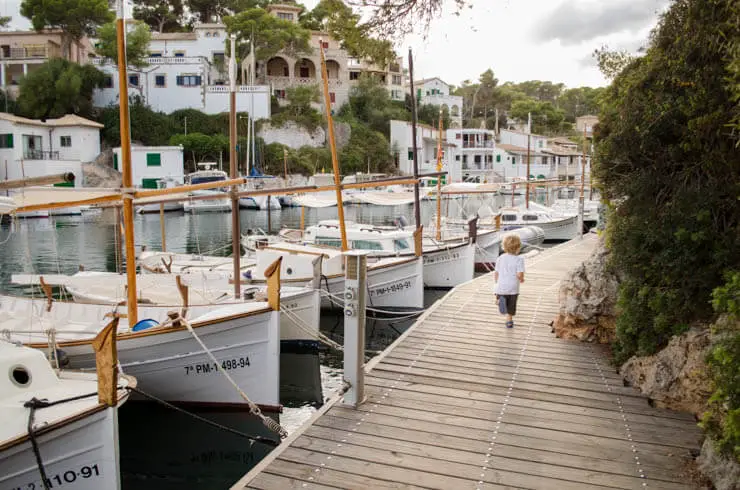
For lunch, however, I would recommend continuing to Cala Figuera. Especially in the summer, you can enjoy a more refreshing atmosphere while sitting on the restaurant terraces overlooking the harbor. Taking a short walk through the port is a must, and the second fjord, in particular, is very idyllic. Even today, the fishing boats depart from the harbor to the sea every day. Between three and five in the afternoon, they return with their catch. If you stay here for that long, you can watch them load, weigh, and cool the fish. However, we must continue with our journey.
On the way to Portocolom, shortly after leaving the town, we’ll take a detour to the Santuari de Consolació chapel. The direct access road has collapsed, so we’ll have to climb some stairs up the hill for the last part. The effort is worth it, though. Once you reach the top, you’ll be rewarded with a stunning view of the sea and an almost forgotten monastery complex with thick walls. In the courtyard, there’s a fountain, and behind the church, you’ll find an iron swing. Everywhere, you’ll discover cozy corners to sit and linger.
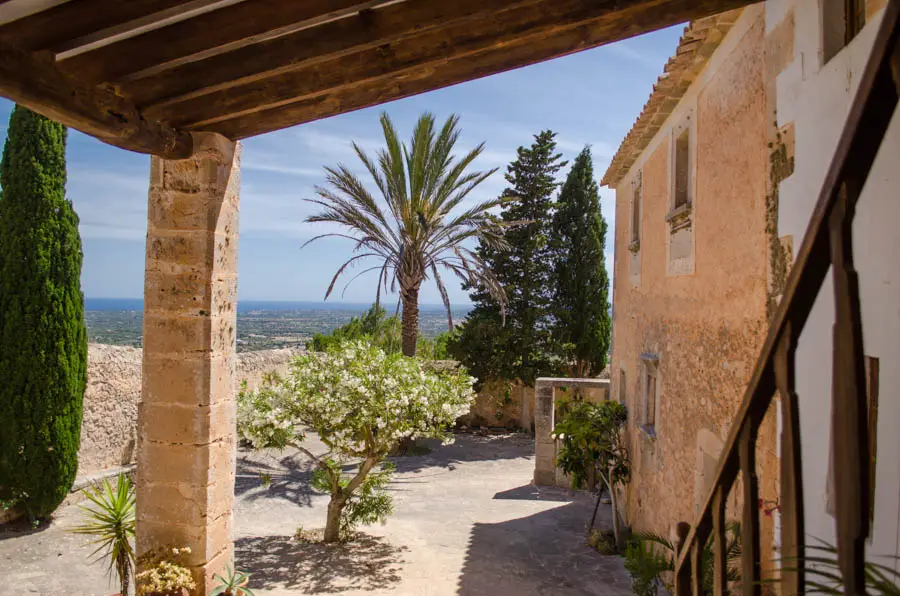
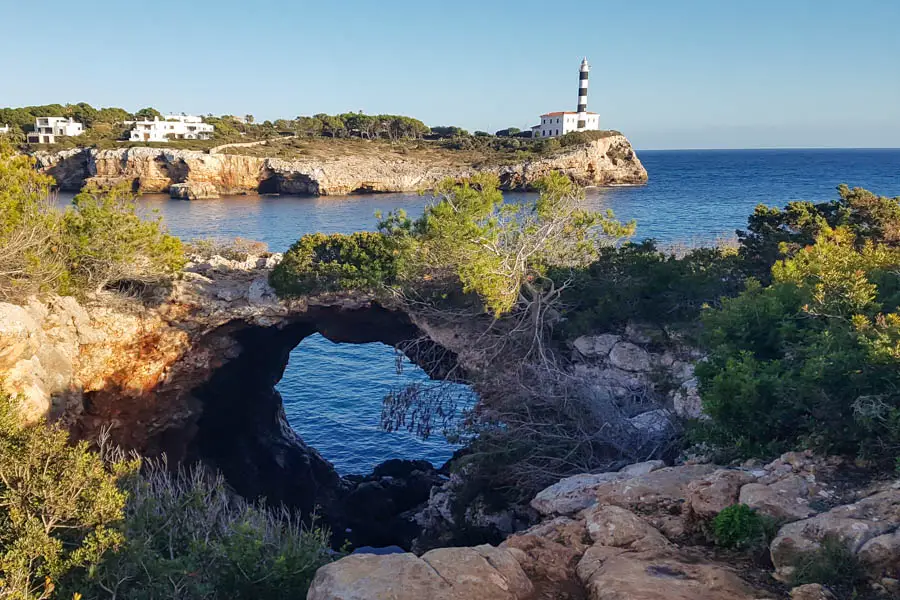
In Portocolom, another harbor town rumored to be the birthplace of Christopher Columbus, we’ll first visit a natural landmark. Here, a cave has collapsed, creating a stone arch that frames the lighthouse on the other side of the bay. If you feel adventurous, you can crawl into the remains of the cave. Afterward, it’s finally time for a swimming break. There are several beaches in Portocolom to choose from.
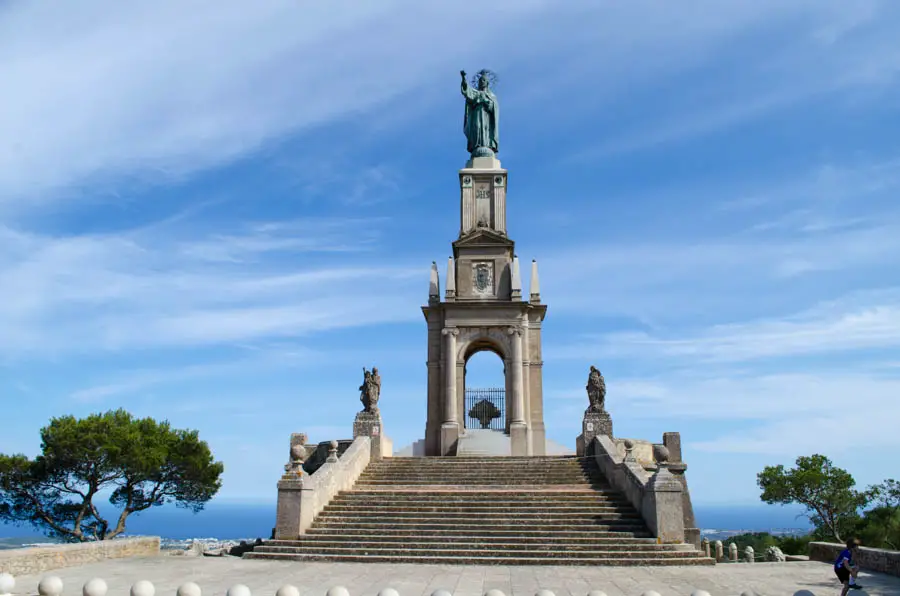
Our last stop takes us to Felanitx. If you happen to be on this tour on a Sunday, you can also start the journey here, as it’s market day in Felanitx. However, the town itself, although beautiful, is not our main destination. We want to go up high again to witness the sun disappear. Just a little outside the city, on the mountain of the same name, lies the Santuari de San Salvador monastery. For those who not only want to see the sunset but also the sunrise, you can even spend the night here.
Through the Mountain Villages: Valldemossa, Deià & Sóller
Valldemossa – Miramar – Sa Foradada – Deià – Sóller
Mallorca Road details:
- Best time of year: All year round
- Duration: 8 hours
- Starting point: Valldemossa
- Endpoint: Sóller
- Distance: 26.8 km
- Driving time: 43 minutes
- Stops: 6
- Swimming break: only with a detour
- If there’s extra time: Port de Valldemossa, Alfabia Gardens, Port de Sóller
This tour takes you along the most beautiful coastal road of Mallorca, leading to some of the island’s most important mountain villages. Although the route is quite manageable, it can be a bit tight with time, especially towards the last stop. The mountain road offers numerous spots where you’ll want to make stops.
Valldemossa, our first stop, is one of those places apart from Palma that almost every visitor must see at least once. The main attraction is the Charter house Monastery, where Frédéric Chopin and George Sand lived for a while, struggling to adapt to the Mallorcan way of life. Enjoy the mountain village, especially during a leisurely stroll.
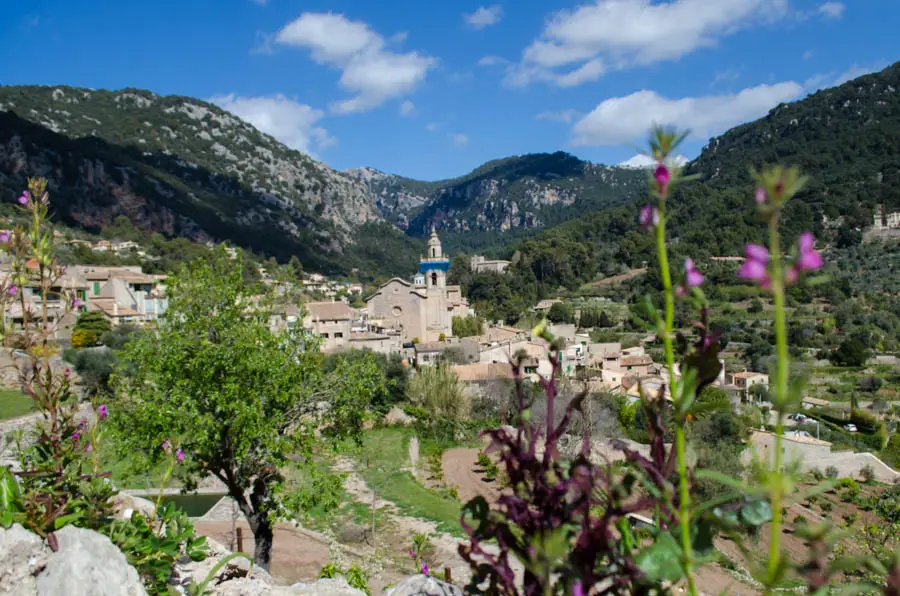
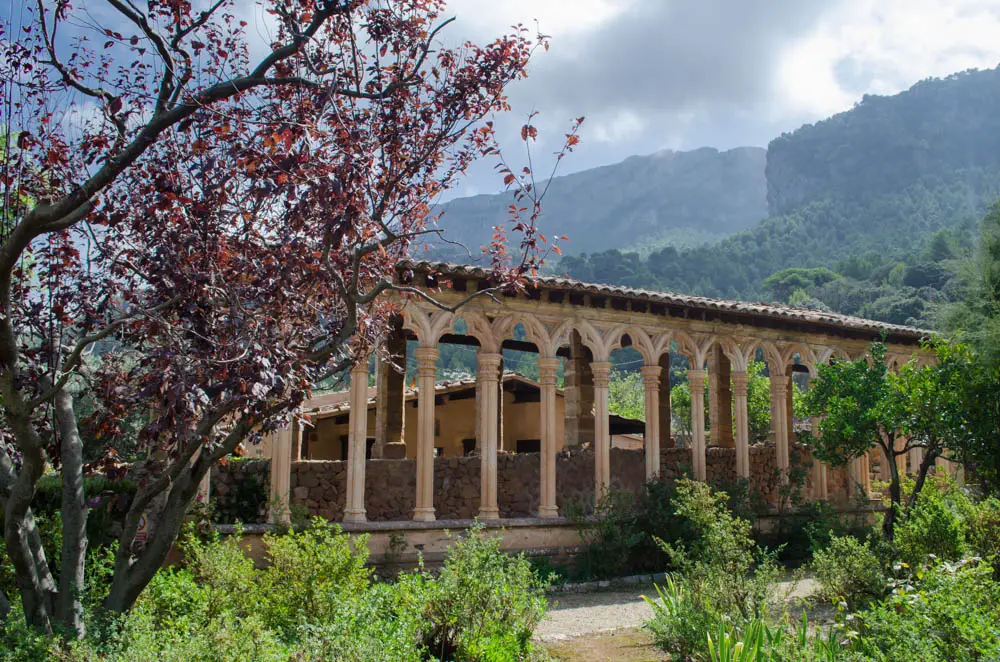
Continuing our journey, we turn off the coastal road before reaching Deià, onto the Miramar estate. Once, it was home to a language mission school, and later, Archduke Ludwig Salvador purchased the land. You can take short walks through the garden and visit some viewpoints. There’s also a small picnic area for a relaxing break.
Just a little further, we pass another estate of the Archduke, Son Marroig, where you’ll find a small exhibition. What is often photographed here is the antique temple in the garden. Even without visiting the house, a brief stop is worth it. There’s a nice bar with a view of the iconic Sa Foradada rock. If it happens to be too crowded there, you can climb over the fence behind the main house (it’s allowed) and walk through the olive trees to a stone seating area for a peaceful moment.
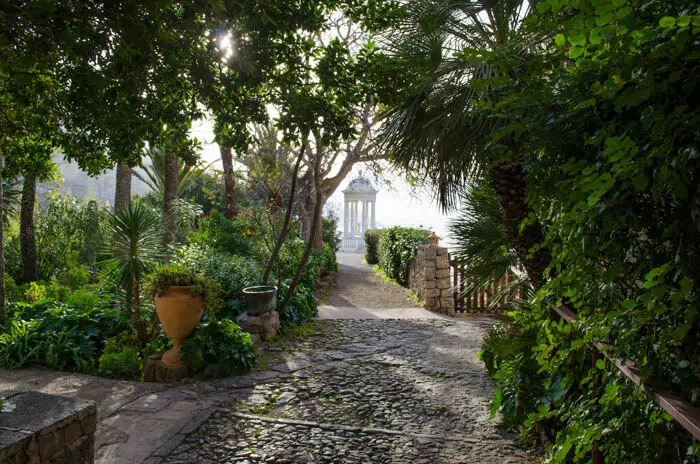
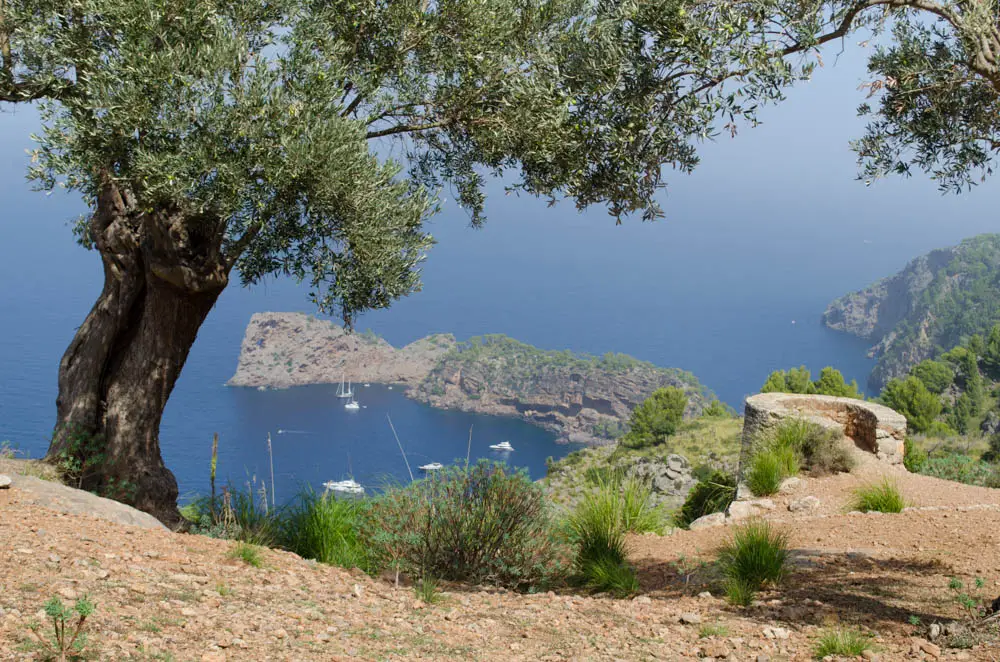
Then, we finally arrive at the mountain village of Deià. The most challenging task will be finding a parking spot. But perhaps you’ll be lucky and find one of the few available spaces. Take a stroll through the narrow alleys up to the church. Alternatively, you can hike along the river, passing by the old washing areas, the olive oil mill, and the museum – maybe even all the way to Cala Deià for a quick swim. During our scavenger hunt through Deià, we’ll guide you to a stunning viewpoint high above the village for a breathtaking panorama.
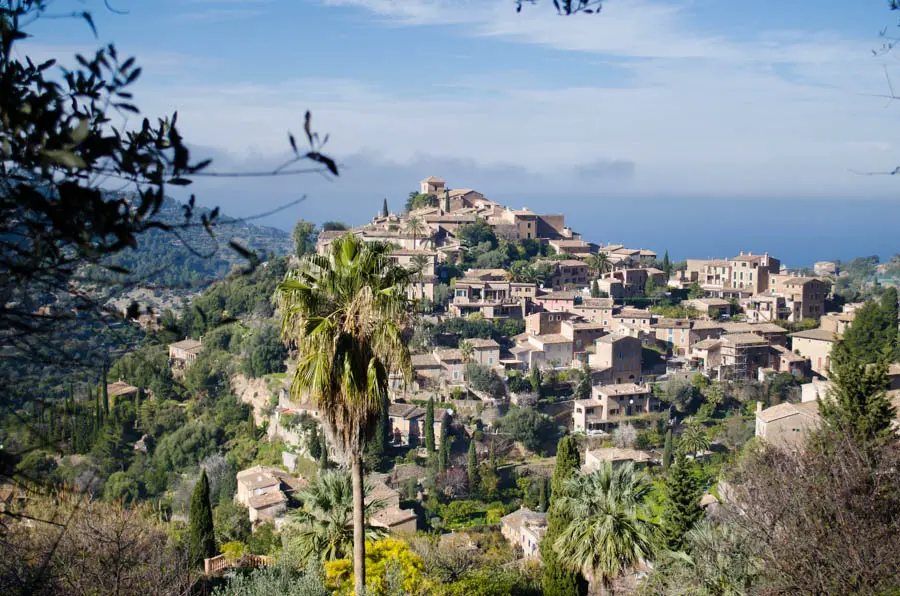
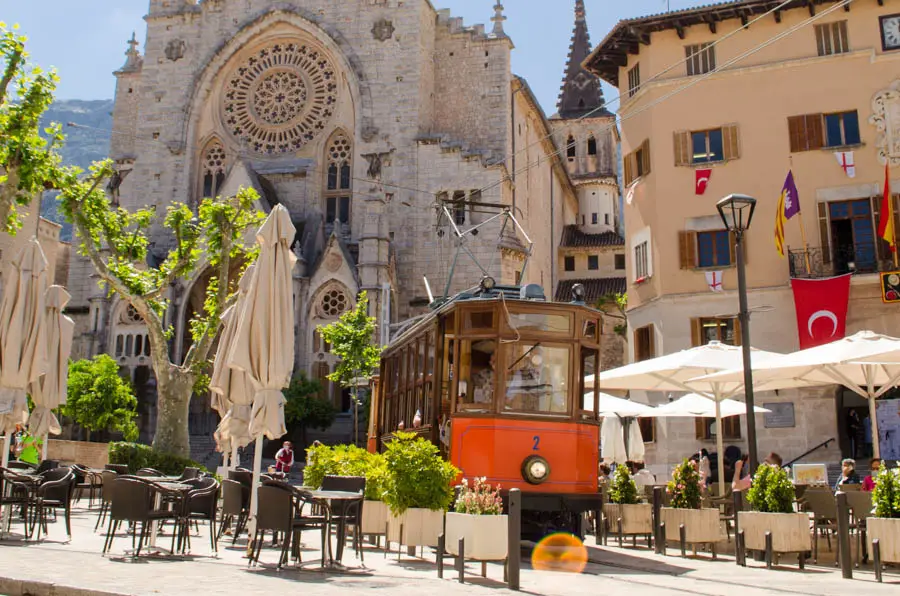
We’ll end the day in Sóller, a town famous for its heritage railway and citrus fruit cultivation. Thanks to its location in a protected valley between the highest mountains, citrus fruits grow exceptionally well here. The trade of oranges and lemons, especially with France, brought great wealth to the locals, which is evident in the architecture of many buildings.
In Sóller, we also have a route suggestion in the form of a scavenger hunt, leading you through sleepy alleys, to the train station, and the sites of pirate attacks. If time allows, you might even take a detour with the tram to Port de Sóller and enjoy a swimming break there.
Orange Valley & Gorges: Exploring from Cúber to Sa Calobra
Biniaraix – Fornalutx – Cúber – Sa Calobra – Lluc Monastery
Road Trip Details:
- Best Season: All year round
- Duration: 8 hours
- Starting Point: Sóller
- Endpoint: Lluc
- Distance: 60 km
- Driving Time: 1 hour 45 minutes
- Stops: 5
- Swimming Break: 1
- If there’s time: Cala Tuent
During this road trip, get ready for some winding roads as we take on the most thrilling route on the island, known as the “nudo de corbata” (tie knot). However, we’ll begin with a tranquil drive through the villages in the Orange Valley near Sóller, and then take a short break to stretch our legs at Cúber Reservoir.
Fornalutx is said to be the most beautiful village in Spain. However, we prefer Biniaraix, as it’s less touristy. Here, the hike through the Barranc de Biniaraix Gorge starts and follows a pilgrimage path to Lluc Monastery, where this tour will end, but via a different route.
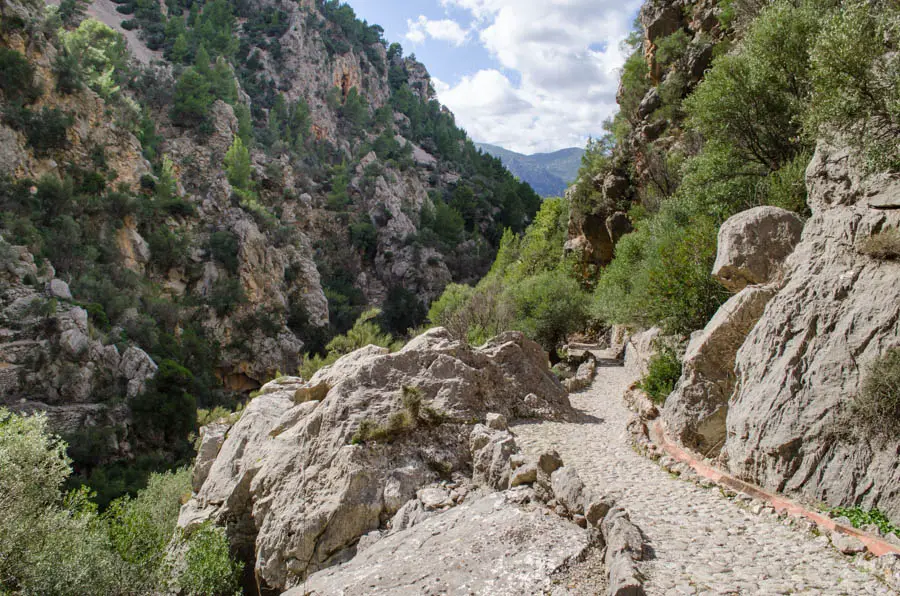
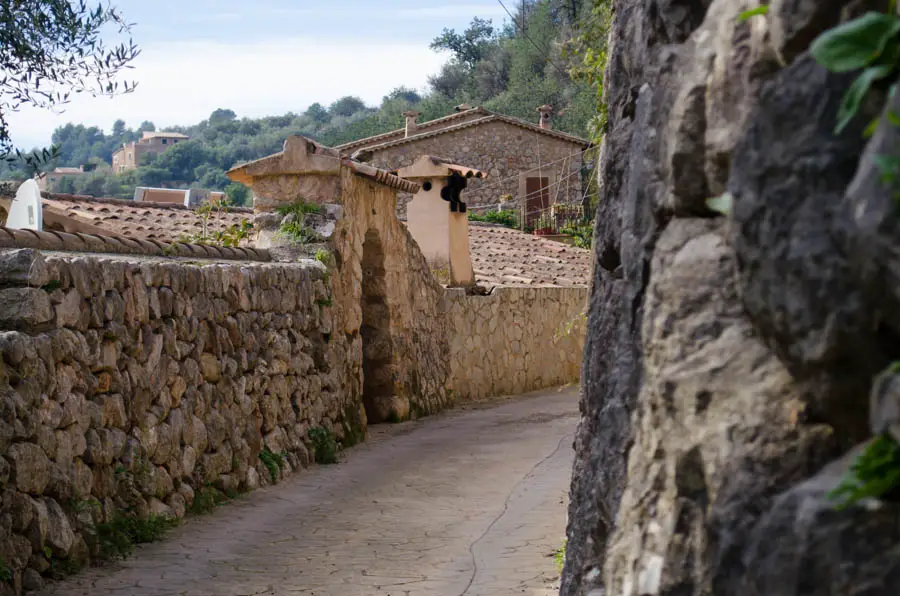
If you want a better insight into orange production on Mallorca, make a quick stop at Finca Ecovinyassa. Alternatively, take a short walk into the gorge. In Biniaraix, there’s no big parking area, so you’ll have to use roadside parking options.
From Biniaraix, it’s just a short drive to Fornalutx. Here, you should definitely climb the stairs up to the orange groves. And if possible, try to make a short stop at Can Xoroi, where you can admire an old olive mill and see an exhibition of painted roof tiles, which were likely meant to ward off evil spirits.
The Cúber Reservoir is located at the foot of Puig Major, Mallorca’s highest mountain. Numerous hiking tours start here, including many challenging ones. However, we’ll settle for a leisurely walk around the lake. If you’re lucky, you might encounter free-roaming donkeys and sheep.
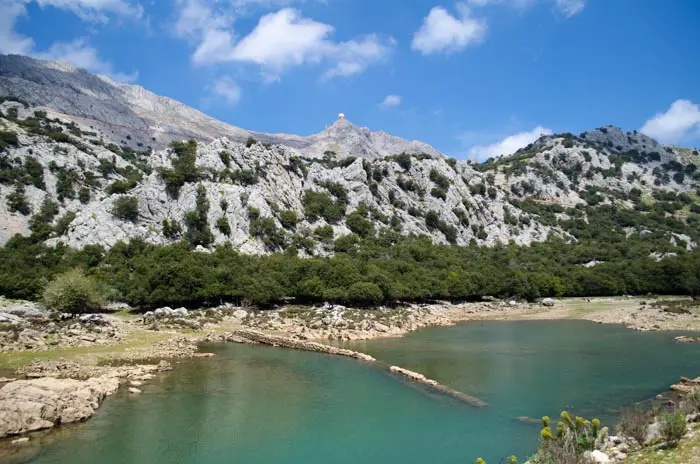
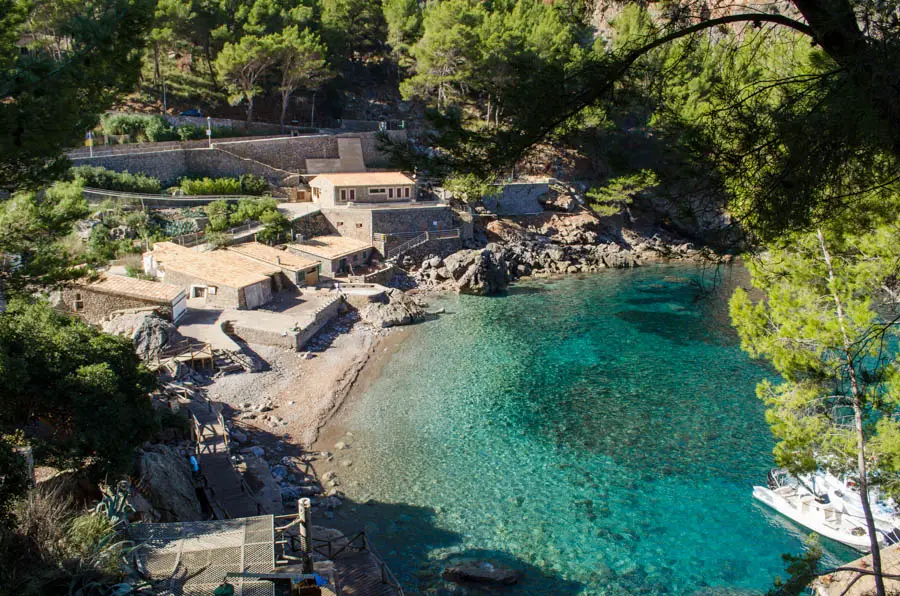
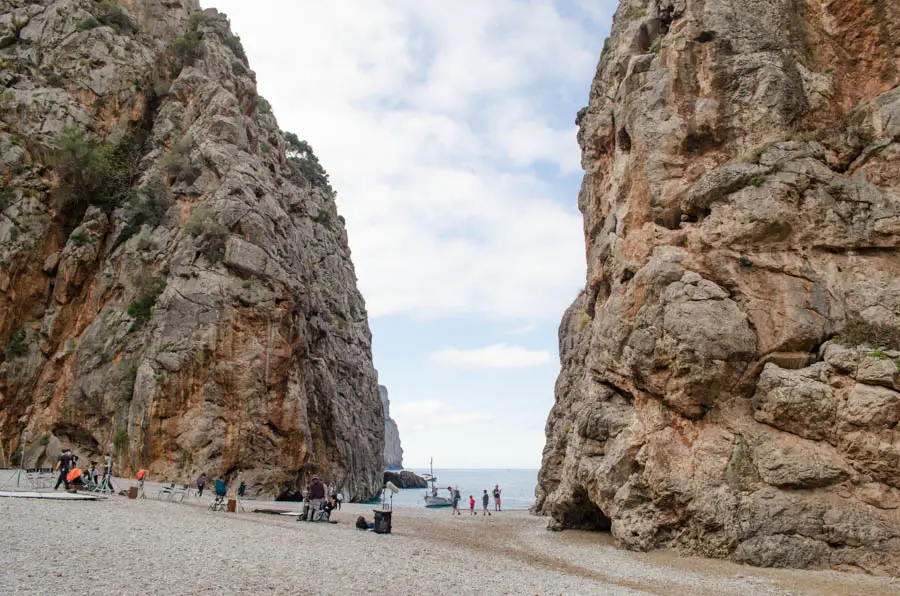
After that, things get really exciting. We’ll descend on the winding road to Sa Calobra and the Torrent de Pareis. Depending on the traffic, you can make various stops at the hairpin bends to enjoy the views. For swimming, the small beach in the Sa Calobra harbor is more suitable than the Torrent de Pareis. Both beaches are not particularly beautiful, but if you’re looking for a longer swimming stop, you can add a detour to Cala Tuent.
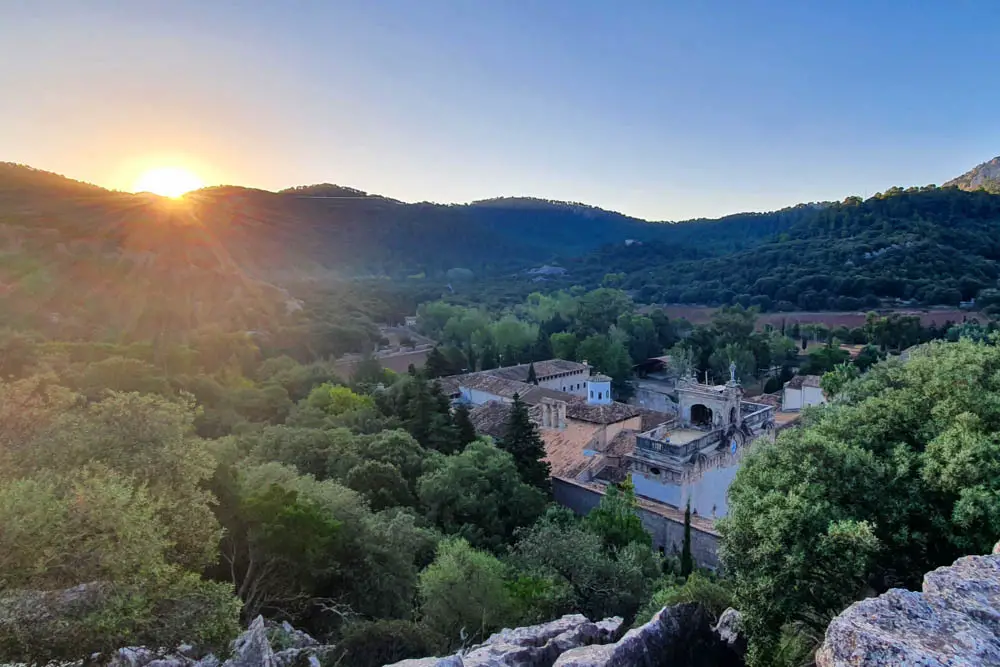
As our last stop, we will visit the Black Madonna at the Lluc Monastery, one of the most important pilgrimage sites on the island. There are numerous activities to do around the monastery, such as small or long hiking tours, relaxing in the small pool at the botanical garden during summer, or taking leisurely walks around the monastery grounds.
Individual Mallorca Road Trip Itinerary
If none of the suggested routes fit your preferences, I would be delighted to assist you in creating a custom road trip tailored to your interests. Feel free to contact me at [email protected] for a consultation to incorporate your preferences into the itinerary.
Read More
Want more recommendations like this? Check out more than 100 day trips and excursions on Mallorca.
Planning your holiday on Mallorca:
Book your Flight here
Great Rental Car Offers

